[ad_1]
Lucid will address the meat of the new-vehicle market with a crossover SUV dubbed the Gravity.
On Thursday, the Lucid Gravity electric three-row crossover SUV debuted at the 2023 LA auto show. When it arrives late in 2024 Lucid projects the Gravity will have over 440 miles of range and base models will cost less than $80,000. However, those two numbers are not for the same vehicle.
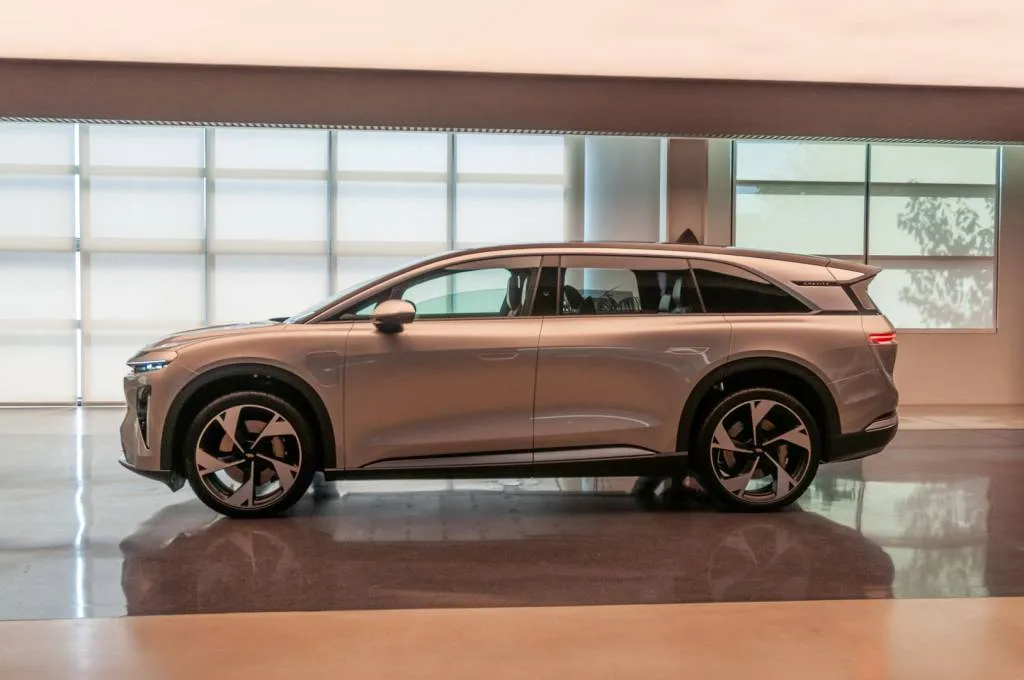
Lucid Gravity
Lucid won’t talk specifics yet regarding the Gravity’s powertrain, but it will launch with a dual-motor variant first with a 0-60 mph time of less than 3.5 seconds. Power output is unknown, but all-wheel drive will be standard thanks to a motor at each axle. Like the Air sedan, a single-motor rear-wheel-drive and tri-motor Sapphire model will likely arrive in due time. The motors are said to be a next-generation variation of what’s found in the Air sedan.
Details are still being finalized with production a year out, but the Gravity’s coefficient of drag is currently about 0.24, but the team’s aiming for 0.23 by the time production starts. That would make it the most aerodynamic three-row crossover SUV. At 198 inches long the Gravity is 1.3 inches longer than the Cadillac Lyriq.
The Gravity is based on a new vehicle-specific platform with an evolution of the automaker’s 900-volt electrical architecture. Lucid said the Gravity will be capable of adding 200 miles of range in 15 minutes with a pack that’s about the same size as what’s found in the Air. An available air suspension will be paired with adaptive dampers. Lucid hasn’t detailed how much ground clearance the Gravity will have in its normal, max, or lowest height.
Lucid execs said the Gravity’s forte will be on-road performance, but it will have a reasonable amount of off-road capability, will have a payload rating of 1,500 pounds, and will tow up to 6,000 pounds.
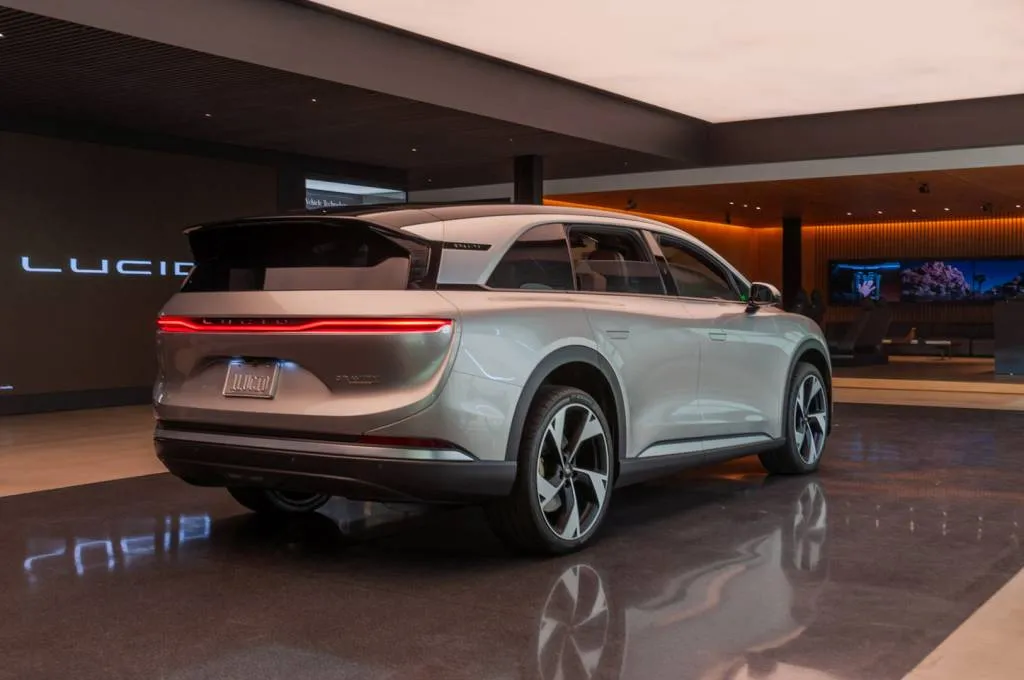
Lucid Gravity
The design of the Gravity evolved from the concept teased in 2020. The overall proportions with short overhangs, rounded front end, and Air sedan-like details are all present, but the roofline’s changed in the name of aerodynamics. The rear portion of the roof tapers off with a spoiler that flows off the C-pillars to help control the airflow. The high beam lights are mounted mid-bumper beneath the horizontal low beams, and the front trunk opening extends down into the front bumper for low liftover height. Unlike the Air the Gravity’s charge port door is not power-operated and it flips up and to the left when opened. The frunk will have an optional seating pad that clips in and makes it comfortable for two adults to go frunkgating. There are even two cup holders under the hood, one on each side of the frunk.
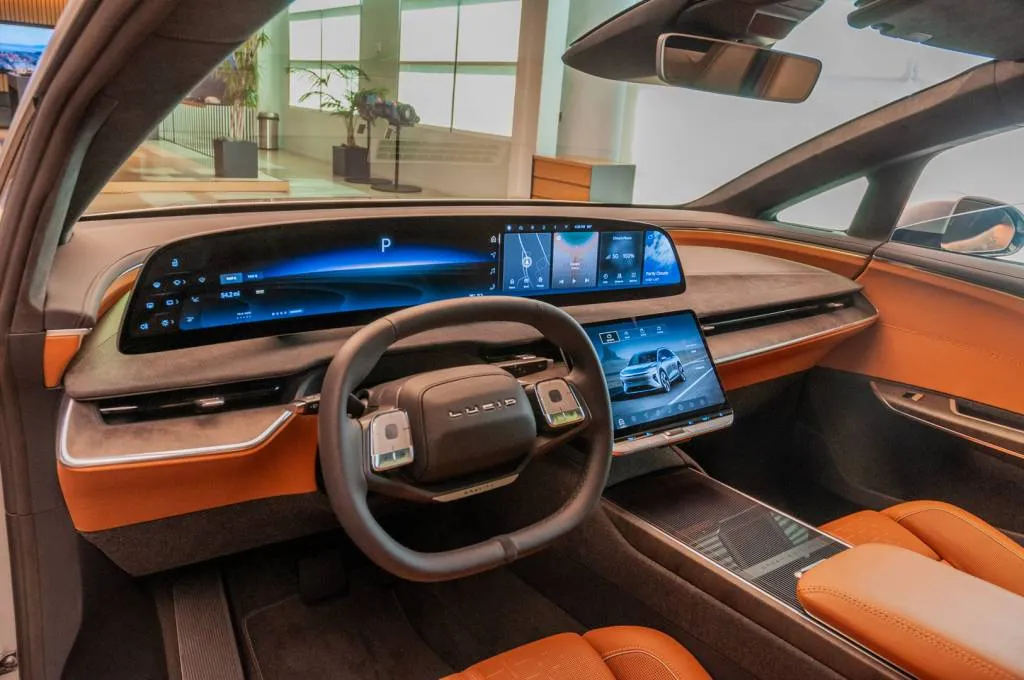
Lucid Gravity
Inside the Gravity evolves the Air’s dashboard design. The 34-inch curved OLED digital display is now one solid screen instead of three screens under one panel of glass. The steering wheel is almost a squircle design with two touchpads with haptic feedback. It sits lower than the steering wheel in the air to avoid blocking the view of the digital gauge cluster. A new horizontal 12.6-inch touchscreen houses the automaker’s next-generation operating system, dubbed, UX 3.0, and it features a new, faster, electrical architecture than the Air. Hard button toggles and knobs remain for the core audio (volume knob) and climate control functions. The second row feature airplane-like fold-out tables—Lucid believes owners will bring their own tablets for work and play, and does not see a need to build in tablets for a rear-seat infotainment system that will feel dated in a few years.
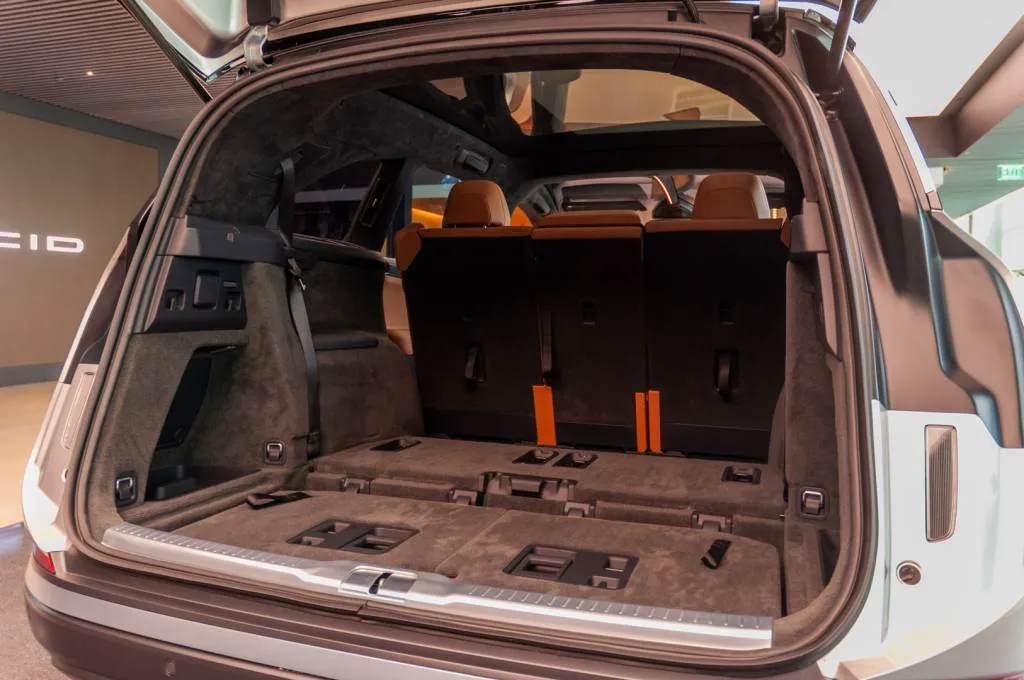
Lucid Gravity
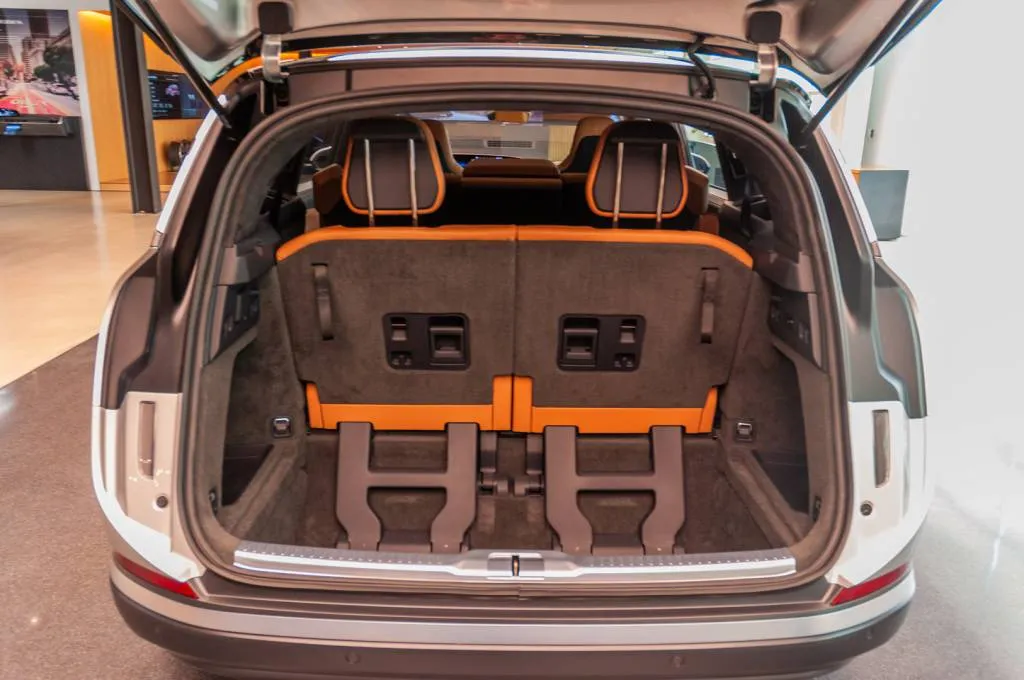
Lucid Gravity
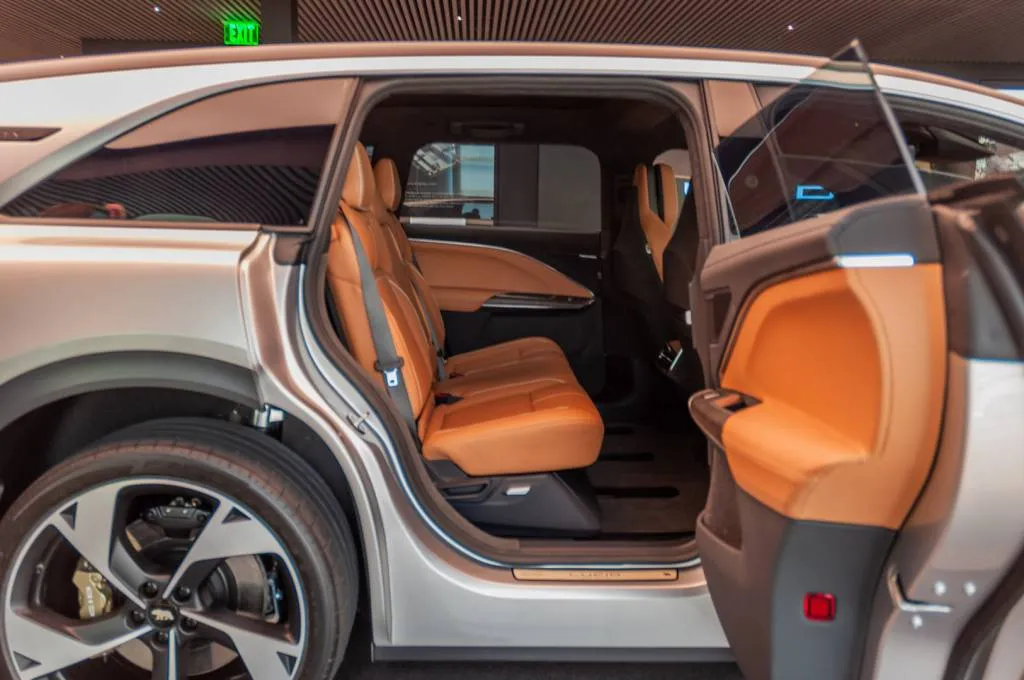
Lucid Gravity
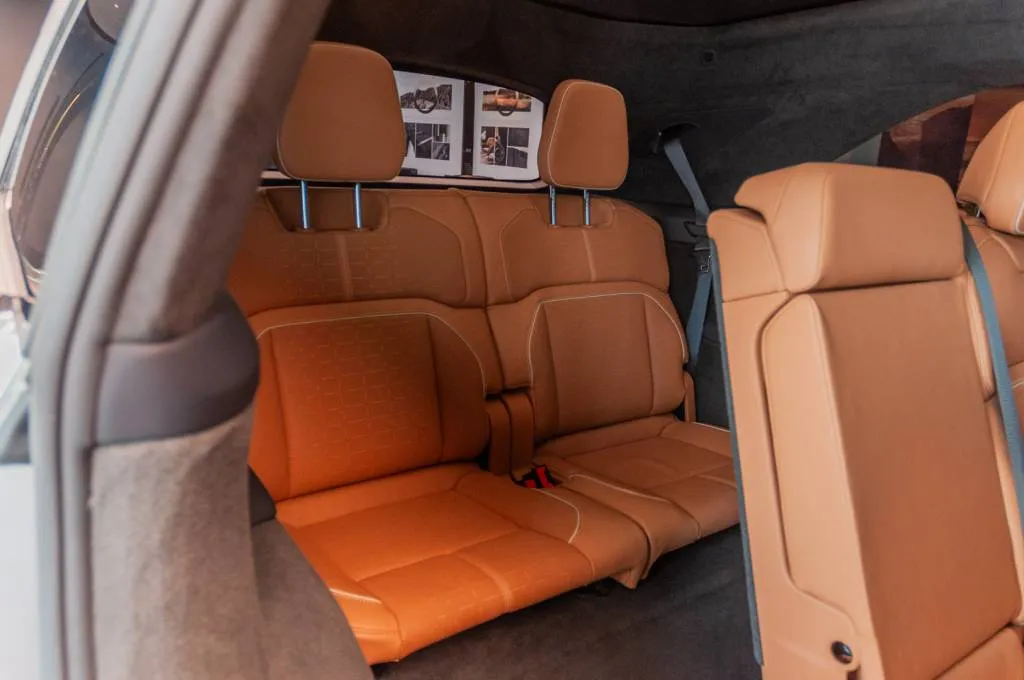
Lucid Gravity
Every Gravity features three full rows of seats with room for seven passengers. A six-seat model with second-row captain’s chairs is in the works, but won’t be available at launch. At 5 foot 10 I was able to comfortably sit behind myself in all three rows. The second row split-folds in 40:20:40 sections, while the third row folds flat into a cargo well in 50:50 sections with minivan-like packaging. When the third row’s in the upright position a false floor in the cargo area hides storage. With both the second and third rows folded Lucid said items that are 7.5 feet long can fit inside the Gravity, and an 8.5-foot surfboard can fit diagonally. Total cargo space is 112 cubic feet, and that includes the frunk, which measures about seven feet.
Every Gravity will feature automatic emergency braking, active lane control, blind-spot monitors, a surround-view camera system, and cruise control. The automaker’s DreamDrive Pro driver-assistance system will be available, which eventually promises to deliver semi-autonomous driving functionality.
[ad_2]
Source link




